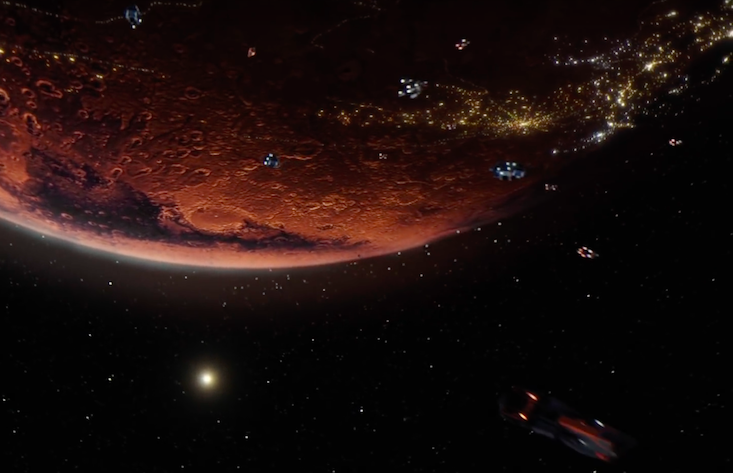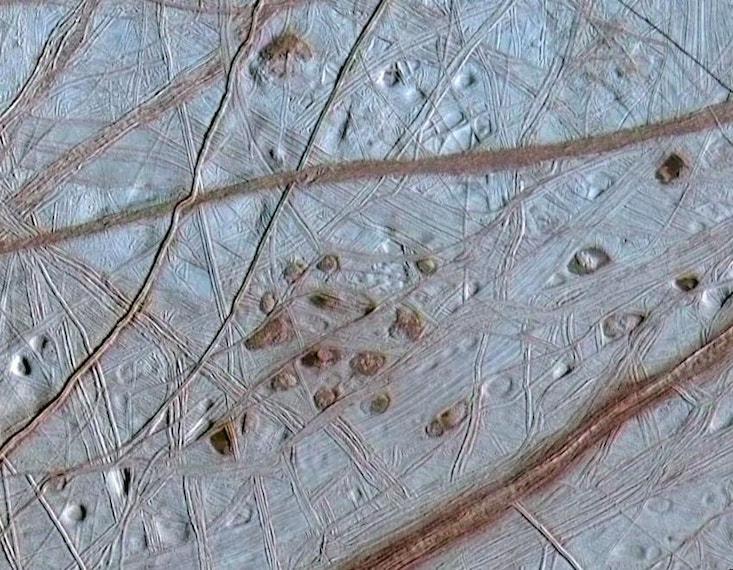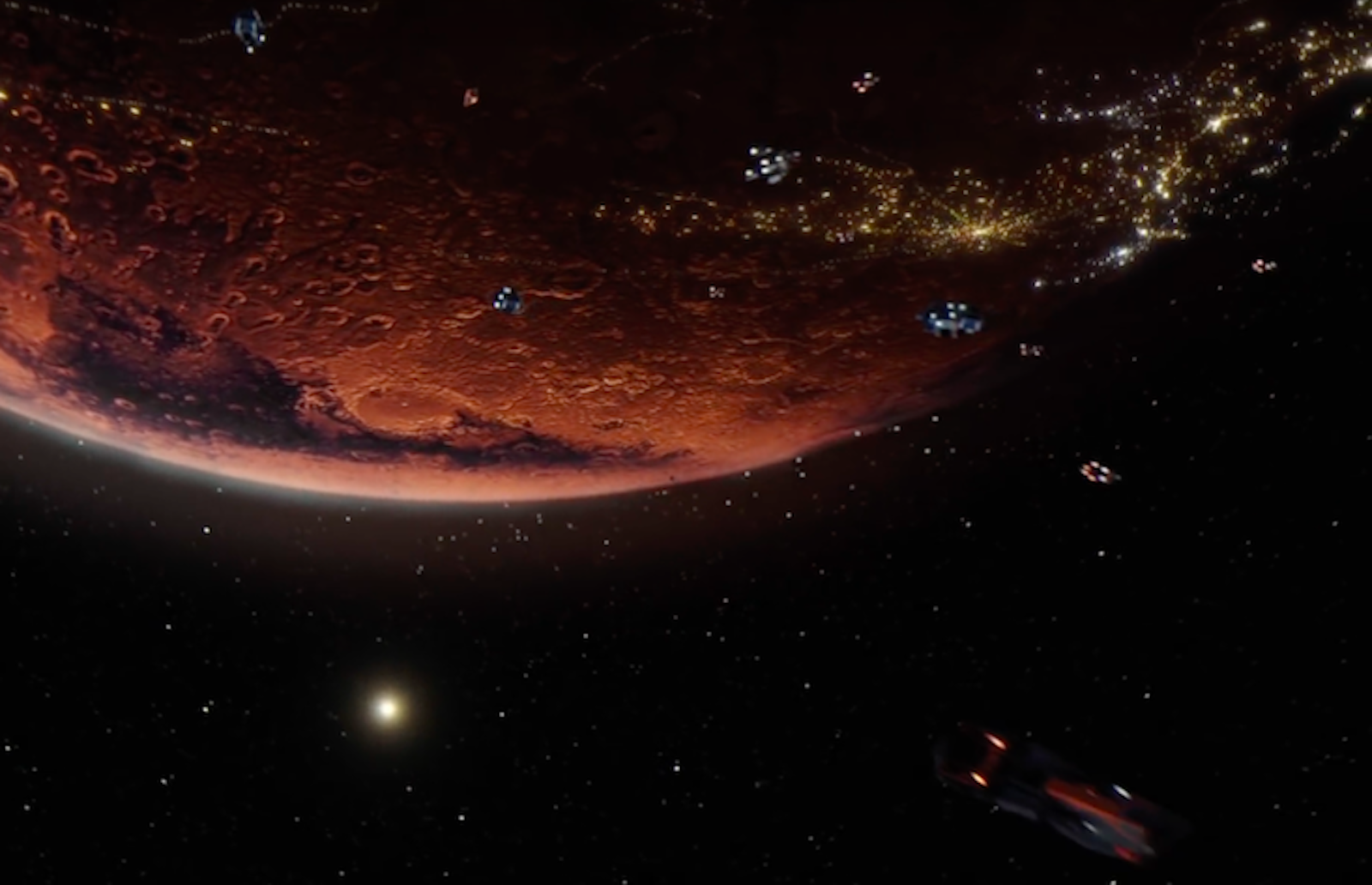
In the why-aren’t-you-watching-this television show The Expanse, humanity has spread out into the solar system. Mars and Earth stand as bitter rivals, with Ceres settlers somewhere in between. A few companies even have settlers in the outer regions of the solar system.
You wouldn’t necessarily want to live in the world of The Expanse, as fantastic as it is. Yet the show still plays to the dreams of those of us who long to wander the final frontier. However, the reality of what awaits you beyond Earth is far more dangerous than the show. Even if you make it past the interplanetary radiation, you’re still confronted with any number of hazards, and they don’t stop once you land.
Here are a few places from your colonization dreams that might end up actual nightmares.
The Moon
The Moon is close—tantalizingly close—and we’ve actually stepped foot there. But as the Apollo astronauts returned to Earth in their moon dust-covered space suits, every moonwalker encountered the same set of symptoms: sneezing, wheezing, sore throats, and nasal congestion. It seemed like they were all allergic to the moon.
Harrison Schmitt, an Apollo 17 crew member, called it “lunar hay fever,” according to a recent European Space Agency press release. The big culprit, ESA says, is the presence of silicates—a group of silicon/oxygen compounds. Those compounds cause all of these symptoms in volcanic ash on Earth, and the Moon is littered with the stuff. But because there’s no oxygen on the Moon, the silicates on the surface aren’t eroded, making them even more dangerous: they can embed in and scar lung tissue more easily than their Earth-bound cousin. And not only is it a hazard to lunar explorers’ bodies, but it can also wear away at their equipment and spacesuits, too.
So think of it: your day-to-day is surrounded by these nasty silicates. You’re tracking it in everywhere with you. It’s in your equipment. It’s in your clothes. Slowly but surely, you’re breathing it in more and more. Quartz miners have been known to come down with a condition known as silicosis, which can cause permanent lung damage. In some cases, those affected may die of complications from the disease.
Mars
Sure, there’s water on the Red Planet. Mars’ strange and contentious “recurring slope lineae” have shown that. But these gully-like features mix a small amount of water in with a ton of perchlorates, a form of chlorine salts.
And that’s dangerous.
Perchlorates are incredibly toxic to humans. They’re cause for an industrial location to end up on the EPA’s Superfund site list here on Earth. Table salt—sodium chloride—is a non-toxic material. But perchlorates are chiefly made of oxygen and chlorine, which often fails to stabilize the toxic chlorine for Earth-life. Instead, you get a nasty kind of salt that can harm thyroid function, decrease bone marrow production, and damage lung tissue. Perchlorates also easily make their way into drinking water and food, which is bad if, say, you’re trying to grow potatoes in Martian soil.
Microbes exposed to Mars-like conditions—including perchlorates—died shortly after exposure. Sunlight also seems to catalyze the perchlorates. In other words, they might become an environmental hazard, even inside oxygenated environments. That gives a lot of ways for the perchlorates to slowly seep into your system. Mars already has an increased radiation risk due to its lack of a magnetic field and thin atmosphere. But all the radiation protection in the world might not prepare you for a nasty chemical contaminating what drinking water you have on that dry, dry planet. Or maybe it gets into your lungs and you slowly suffocate from exposure. A good chunk of perchlorate-related deaths come from thyroid disruption, as it can induce Grave’s disease.
It’s not great to be around. And it’s all over Mars.
Europa
Poor old Europa isn’t out to kill you, per se. It’s a big oceanic world, after all, just waiting for us to find life. It seems to have all the right ingredients for it hiding under a thick ice shelf.
The problem comes in when you consider Europa’s location: firmly within the radiation belts of Jupiter. Io and Europa are bombarded with lethal amounts of radiation. The future Europa Clipper mission even avoids orbiting Europa directly to lengthen the craft’s lifetime. If you landed Europa’s surface, the radiation dose would kill you—and anything else—within days.

The ice shell, however, is thick enough that it might protect any life below. We’ll just never be able to say hi. Perhaps that’s why any far-reaching human exploration plan for the solar system aims to land on Callisto, the outermost of the four large moons of Jupiter. It has an insignificant amount of exposure to Jupiter’s magnetosphere.
Titan
Titan is such a tempting place. This planet-sized moon of Saturn looks much like early Earth. It has a thick atmosphere—the only moon known to have one so dense—and bodies of liquid all over the planet.
Except it’s all hydrocarbons. Where’s the water? If you manage to land on the surface of Titan water has been transformed into the rock all around you, frozen solid by frigid temperatures. And the pitter-patter of rain is actually a chemical closely resembling gasoline. Though the atmospheric pressure on Titan is higher than that of Earth, the actual hydrocarbon lakes are too thin to efficiently swim through. Oh, and it’s muddy everywhere.
Dig down, way, way far down, on Titan, though, and you might find a subterranean ocean of water. This means that Titan has two oceans, both closed off from each other, one on the surface and the other deep below. This could also mean Titan has two biospheres, as strange forms of nitrogen-based life using vinyl cyanide as cell walls could theoretically exist in the hydrocarbon lakes. If you stacked up all the potentially habitable places in the solar system together, the nitrogen life would easily be the most alien.
Titan wouldn’t kill you in specific ways, unlike Mars or the Moon. But it’s not exactly a place you want to be, either. There aren’t a lot of resources for survival—save digging deep down or using hydrocarbons as fuel to jump to the next rock over. Let’s stick to robotic probes for now.
Outer Space
In June 1971, the Soyuz 11 capsule and its three cosmonauts landed back on Earth after becoming the first mission to board humanity’s first space station. To their horror, the Russian space agency found the cosmonauts dead inside their spacecraft. Attempts to revive them didn’t work. They’d been exposed to the vacuum of space.
No astronaut is going to deliberately walk out an airlock, at least if they’re still in their right mind, which is not necessarily a guarantee. The Soyuz 11 crew are a good way to contrast the fact with the fiction of exposure to space. No, you don’t explode. Instead, you’re rapidly robbed of the air in your lungs, leading to asphyxiation. The official cause of death for the cosmonauts was brain hemorrhaging, as their systems had been rapidly robbed of oxygen. They didn’t die instantly either—they probably had one panicked minute as they died, as lactic acid levels, associated with stress—were extremely high.
After the accident, cosmonauts were given pressurized suits. While other space crews have died in the course of their mission, the Soyuz 11 crew remains the only one to die from exposure to the vacuum. So, uhh, make sure your spaceship is extra air tight.
Enceladus
Enceladus is mostly water, which is great for whatever life arises there. The biggest hurdle is its gravity.
An Earth-sized hop on Enceladus could launch you 140 feet in the air. And at its south pole where Enceladus’ ocean is accessible, jets of frozen water vapor launch as high as 100 miles (161 km) at a speed of 1304 miles (2100 km) per hour.
So what’s causing those intense jets? Tidal forces from Saturn. That could make for some pretty intense waves on the ocean below. Imagine trying to navigate a submarine through intense, rough waves while risking getting swept up in a plume event. Sure, when you jump at Enceladus you might have a slow path back down, but an ejection at not-quite-escape-velocity could bring you smacking back down to the ice shell of Enceladus. Hard.
It might be a good place to refuel, but it’s probably not the best place to settle in.
Ceres
Let’s pull an “actually” here. Actually … the Belters in The Expanse may have it best. Ceres was once a water world that froze over, leaving a few little deposits of liquid water here and there. But it’s mostly an iceball dwarf planet with a thin coat of dust. Peeking out from those bits of ocean are salt deposits. Unlike the salts on Mars, they’re not toxic perchlorates, but rather, magnesium sulfate. That compound isn’t toxic to humans at all. You’ve probably soaked your weary bones in it or taken it as a laxative in the form of epsom salts.
And the asteroid belt is more diffuse than The Empire Strikes Back might suggest. While Ceres’ surface certainly shows it hasn’t had an easy time, most asteroids in the present day belt are, on average, about 600,000 miles (940,000 km) apart.
Of course, the lack of a substantial atmosphere (most “atmospheric” pockets on Ceres are short-lived and surround sublimating ice) and magnetic fields will leave you unprotected from the harsh radiation of space, but that’s the same as on the Moon and on Mars. One of the biggest hurdles might be the abundance of ammonia on Ceres. All told, ammonia is probably a lesser hazard than some of the others we’ve discussed, but it’s hard to separate ammonia from water, and exposure to it is harsh on your respiratory system.
So it might not be life friendly, but it’s certainly less out to kill you than Mars or the Moon.
John Wenz is a science and technology editor and writer.
This article was originally published on DiscoverMagazine.com on July 9, 2018.






























